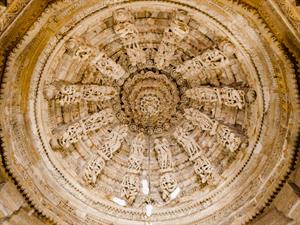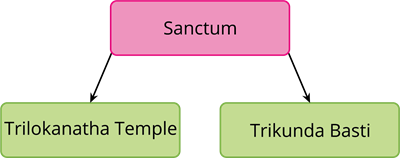
PUMPA - SMART LEARNING
எங்கள் ஆசிரியர்களுடன் 1-ஆன்-1 ஆலோசனை நேரத்தைப் பெறுங்கள். டாப்பர் ஆவதற்கு நாங்கள் பயிற்சி அளிப்போம்
Book Free DemoKanchipuram Jain Temples:
The Jain monks proliferated in areas of Kanchipuram which were ruled by the Kings of the Pallava dynasty. Most of the Pallava rulers were patrons of Jainism which aided in the Spread of the religion and its tenets.
Another major religion Buddhism was also present in Kanchipuram during the same period under the Pallavas. Jainism found more patrons than Buddhism in Tamilnadu.
Jina Kanchi: Considered as the seat of South Indian Digambara Jainism. A Village named Thiruparthikundram in Kanchipuram was also once known as “Jina Kanchi”.
Two well-known exponents of Jainist Principles namely Samantabhadra and Akalanka who were considered as Acharyas (Jain Teachers) belong to Kanchipuram.
1. Chandraprabha Temple:
The Most important among the Jain temples of Kanchipuram are the Chandraprabha temple located in Thiruparuthikundram in Kanchipuram. The temple is located on the banks of River Palar which runs across the district.
This temple was built by the Pallava King Narasimhavarman II at the beginning of the \(8^{th}\) Century.
Chandraprabha : The Jain temple of Chandraprabha in Kanchipuram was built to worship the “Eighth Tirthankara” Chandraprabha. There were \(24\) Tirthankaras and the last one was Mahavira.
According to historians, the legend of Chandrapraba was born to King Mahasen raja. He was made to practice all the rigorous habits of Jain monks and was made to attain nirvana at a very young age.

Chandraprabha Temple
The temple was built under the Pallava Style which contains a small Mandapam and a shrine. The floor above the main sanctum contains the dwelling place of the Tirthankara.
Yali: A mythical figure found in the entrance of Chandraprabha temple which contains the head of a lion with tusks of an Elephant and tail similar to a serpent.
2. Trilokyanatha Temple:
This temple is another historically significant Jain temple located at Thiruparuthikundram, Kanchipuram. It was built during the 11th century under the reign of Pallava King Kulothunga I.
Trilokyanatha temple was built to worship Mahavira the greatest of the Jaina Saints. It also serves as the seat for other Jain Tirthankaras whose Statues were seen in mandapams. The temple houses two groups of Sanctums they are given below.

The Trilokanatha temple consists of idols of:
- Mahavira – \(24^{th}\) Tirthankara.
- Dharma Devi
- Pushpa Danthar – \(9^{th}\) Tirthankara.
The Trikunda Basti sanctum on the other side consists of idols of:
- Parshavanath – \(23^{rd}\) Tirthankara.
- Vasupujyar – \(12^{th}\) Tirthankara.
- Padma Prabha – \(6^{th}\) Tirthankara.
The architecture of the Temple:
The temple contains Ardha Mandapam, Mukha Mandapam at the entrance and the Maha Mandapam which serves as a common Mandapam. The Gopuram of the temple contains three floors which served as a dwelling place of the Monks.
Later the temple was partially renovated by the Chola and the Vijayanagar empire. Irugappa a ruler of the Vijayanagar empire and the disciple of Pushpasena, a Jain monk, expanded the temple by building a \(61\) feet Mandapa with \(24\) pillars known as the Sangeetha Mandapa.
The temple houses famous Mural paintings of the life of Tirthankaras and paintings of Lord Krishna’s dance on the head of a snake.
3. Kalugumalai Temple:
The Kalugumalai temple is a Jain temple located in Thoothukudi is a rock-cut temple built during the reign of Parantaka Nedunjadayan, a Pandyan king who lived during the \(8^{th}\) Century.
Panchavar Padukkai: These are caves of Jain people located in Kalugumalai temple. It is believed to be the Bed of Five Jain saints who stayed there for a long time which also contains figures of Yakshas and the Yakshinis.